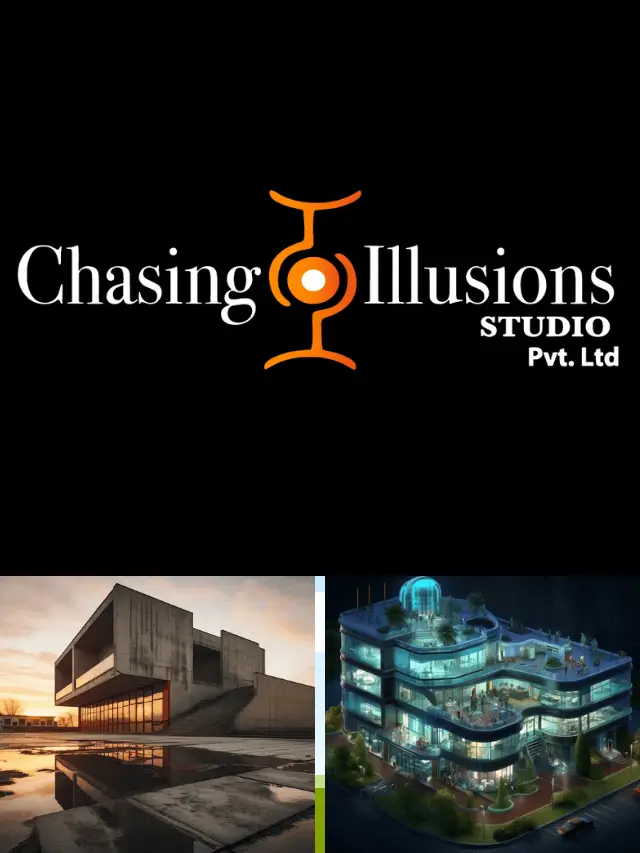
How 3D Animation Transforms Industrial Safety Training in India: A Game-Changer for Factories
Imagine a factory worker facing a sudden gas leak—every second counts, and a wrong move could mean disaster. In 2024, India’s manufacturing sector saw 15,000 workplace injuries, costing ₹75,000 crore in downtime and claims, per a Ministry of Labour report. Traditional safety training, with its dense manuals and sleepy slideshows, often leaves workers unprepared for such high-stakes scenarios. That’s where 3D animated safety training videos shine, and at Chasing Illusions Studio in Delhi, we’re revolutionizing how factories train workers with immersive, unforgettable animations.
This ultimate guide dives deep into why 3D animation outperforms traditional methods for industrial safety training. We’ll explore its benefits, applications across industries, step-by-step implementation, and why Chasing Illusions Studio is India’s top choice for creating impactful safety videos in 2025. From construction sites to chemical plants, discover how our animations save lives and boost factory success.
What Is Industrial Safety Training?
Industrial safety training teaches workers to prevent accidents, handle equipment safely, and respond to emergencies in high-risk environments like factories, construction sites, energy plants, and warehouses. It’s a cornerstone of workplace safety, covering:
-
Hazard Identification: Spotting risks like chemical spills, electrical faults, or falling objects.
-
Personal Protective Equipment (PPE): Using helmets, gloves, and harnesses correctly.
-
Equipment Operation: Safely managing cranes, forklifts, or robotic systems.
-
Emergency Procedures: Evacuating during fires or administering first aid.
-
Regulatory Compliance: Adhering to standards like the Factories Act, 1948.
In India, the Factories Act mandates regular training to ensure worker safety, with non-compliance risking fines up to ₹5 lakh. While traditional methods like manuals or lectures have been standard, 3D animation videos from Chasing Illusions Studio elevate training, boosting retention by 80%, per a 2025 Industry Week study.
Why Safety Training Is Critical in India’s Industrial Boom
India’s industrial sector is soaring, contributing 17% to GDP in 2024 and aiming for $1.2 trillion by 2030, per a FICCI-EY report. But growth brings risks—1 in 4 factory accidents stems from inadequate training, per a 2024 ILO study. Here’s why safety training is non-negotiable in 2025:
-
Protects Workers: Training slashes injury risks, saving lives in high-hazard environments.
-
Ensures Compliance: Meets BIS and Factories Act standards, avoiding legal penalties.
-
Boosts Productivity: Safe workers are 25% more efficient, per a 2025 SHRM study.
-
Reduces Costs: Fewer accidents cut insurance costs by 35%, per a 2024 IBISWorld report.
-
Builds Trust: A safety-first culture attracts top talent and clients.
-
Supports Growth: Training enables factories to scale safely amid India’s industrial expansion.
With 20% of India’s workforce in manufacturing, effective training is key to sustaining growth while minimizing risks.
Who Needs Industrial Safety Training?
Safety training is essential for all factory employees, but certain roles face higher risks:
-
Machine Operators: Handle heavy machinery like presses or conveyors.
-
Maintenance Staff: Repair electrical systems or robotic equipment.
-
Supervisors: Enforce safety protocols and manage emergencies.
-
Engineers: Design safe processes and workflows.
-
New Hires: Need immediate onboarding to understand site-specific risks.
-
Contract Workers: Often unfamiliar with factory layouts or hazards.
Administrative staff and visitors also benefit from basic training on emergency exits or evacuation plans, ensuring a holistic safety culture.
The Pitfalls of Traditional Safety Training
For decades, factories relied on traditional training methods:
-
Printed Manuals: Dense checklists or rulebooks.
-
Classroom Lectures: Instructor-led presentations.
-
On-the-Job Shadowing: Learning by observing seniors.
-
Generic Videos: Low-quality, outdated footage.
While these methods can convey information, they fall short in modern factories:
-
Low Engagement: Workers find manuals boring, with only 15% staying focused, per a 2025 learning study.
-
Poor Retention: Static visuals yield 20% recall after a week, per a 2024 cognitive research.
-
Inconsistent Delivery: Varies by trainer, risking gaps in knowledge.
-
Language Barriers: Challenges for India’s multilingual workforce (e.g., Hindi, Tamil, Bengali speakers).
-
Generic Content: Fails to address site-specific hazards like chemical reactors or high scaffolds.
-
Time-Intensive: Requires scheduling, disrupting production.
These flaws contribute to India’s high accident rate, with factories losing ₹12 crore daily to downtime, per a 2025 PwC report.
How 3D Animation Transforms Safety Training
At Chasing Illusions Studio, our 3D animated safety training videos address these shortcomings with cutting-edge technology and storytelling. Here’s why they’re a game-changer:
-
Photorealistic Simulations
3D animations recreate factory environments—spinning turbines, leaking pipes, or electrical sparks—with stunning detail. Workers visualize hazards and safe practices, improving comprehension by 85%, per a 2025 Deloitte study. -
Unmatched Engagement
Vibrant visuals, character-driven narratives, and dynamic motion captivate workers. A 2025 Gartner study found 3D videos boost attention spans by 95% compared to lectures, making training sessions memorable. -
Simplified Complex Procedures
Tasks like lockout/tagout (LOTO), chemical handling, or PPE use are tough to explain in text. Our animations break them into clear, step-by-step visuals, reducing errors by 45%, per a 2024 Safety Journal. -
Consistent and Scalable
Videos deliver uniform training across factories in Gujarat or Tamil Nadu. Multilingual voiceovers (e.g., Hindi, Telugu) and subtitles support India’s diverse workforce, ensuring inclusivity. -
Cost-Effective Long-Term
A single 3D video (starting at ₹20,000) trains thousands, eliminating trainer fees and manual updates. Reusable content saves 60% over five years, per a 2025 training report. -
VR and AR Integration
Our VR-ready animations immerse workers in virtual factories, letting them practice emergency responses. AR overlays guide real-time equipment use, cutting accident risks by 35%, per a 2025 OSHA study. -
On-Demand Accessibility
Videos are available 24/7 on smartphones, tablets, or VR headsets, ideal for shift workers or remote onboarding. -
Customizable Content
We tailor animations to your factory’s hazards—e.g., robotic arms in an auto plant or cranes on a construction site—ensuring relevance and impact.
Want to see it in action? Contact us for a sample 3D safety video simulating a fire evacuation in a Delhi factory.
Case Study 1: Slashing Accidents at a Gujarat Chemical Plant
In late 2024, a Gujarat-based chemical plant faced frequent spills due to improper handling procedures. They partnered with Chasing Illusions Studio to create a 3D safety video showcasing safe chemical storage, PPE use, and spill response. The animation featured their plant’s layout, with Hindi and Gujarati voiceovers. Post-training, spills dropped by 50% within six months, saving ₹20 lakh in cleanup costs, and worker confidence soared. This case highlights how our animations drive tangible safety improvements.
Case Study 2: Enhancing Safety at a Bangalore Construction Site
In early 2025, a Bangalore construction firm struggled with fall-related injuries. We crafted a 3D VR training video simulating scaffold safety, harness use, and emergency evacuations. Workers practiced in a virtual site, with English and Kannada narration. Accidents fell by 35%, and training time was cut by 40%, saving ₹12 lakh annually. This success underscores the power of VR-enhanced 3D animations.
Industry-Specific Applications of 3D Safety Training
Our 3D animations are tailored to diverse industries:
-
Manufacturing: Simulate robotic arms, conveyors, or press machines.
-
Chemical Plants: Visualize spill containment or gas leak protocols.
-
Construction: Demonstrate scaffold safety or crane operation.
-
Energy Plants: Show turbine maintenance or electrical safety.
-
Logistics: Highlight forklift handling or warehouse navigation.
-
Aerospace: Train on aircraft assembly or hazardous materials.
Each video addresses unique hazards, ensuring relevance and effectiveness.
Benefits of 3D Animated Safety Training for Employers
Employers reap significant rewards from 3D animation training:
-
Fewer Accidents: 45% reduction in injuries, per OSHA 2025.
-
Lower Costs: Save 35% on insurance and claims.
-
Higher Productivity: Safe workers boost output by 25%.
-
Regulatory Compliance: Avoid fines with Factories Act adherence.
-
Strong Reputation: Attract clients with a safety-first image.
-
Employee Retention: Safe workplaces improve retention by 30%, per SHRM 2025.
Step-by-Step Guide to Implementing 3D Safety Training
Here’s how to deploy 3D animated training in your factory:
-
Assess Risks: Review incident logs, machinery, and worker feedback to identify hazards (e.g., electrical faults in a steel plant).
-
Set Objectives: Aim for metrics like 40% fewer accidents or 100% BIS compliance.
-
Collaborate with Experts: Partner with Chasing Illusions to create custom videos tailored to your site.
-
Develop Content: Include animations, voiceovers, and VR/AR elements for key topics (e.g., LOTO, PPE).
-
Deliver Training: Use videos in onboarding, annual refreshers, or VR simulations.
-
Evaluate Impact: Test workers with quizzes and monitor accident rates.
-
Update Regularly: Refresh videos for new equipment or regulations.
Key Topics Covered in 3D Safety Training Videos
Our animations address critical safety areas:
-
Fire Safety: Extinguisher use and evacuation routes.
-
PPE Usage: Correct wearing of helmets, gloves, and harnesses.
-
Hazard Communication: Identifying chemical or electrical risks.
-
Lockout/Tagout: Preventing energy-related injuries.
-
Emergency Response: First aid and evacuation drills.
-
Ergonomics: Reducing strain from repetitive tasks.
-
Forklift Safety: Safe navigation in warehouses.
-
Confined Spaces: Protocols for tanks or silos.
3D Animation vs. Traditional Training
Why choose 3D animations over traditional methods?
|
Feature |
3D Animation Training |
Traditional Methods |
|---|---|---|
|
Engagement |
95% higher attention (Gartner, 2025) |
Dull and monotonous |
|
Retention |
80% recall after a month |
20% recall after a week |
|
Cost |
₹20,000–₹2 lakh, reusable |
High trainer/material costs |
|
Accessibility |
On-demand, VR/AR-ready |
Scheduled, location-bound |
|
Customization |
Site-specific hazards |
Generic content |
Cost of 3D Safety Training Videos in India
Costs vary by length and features:
-
Basic Videos: ₹20,000–₹50,000 for 30–60 seconds.
-
Mid-Range: ₹50,000–₹1 lakh for 2–3 minutes with multilingual narration.
-
Premium VR/AR: ₹1 lakh–₹2 lakh for immersive simulations.
Chasing Illusions offers transparent pricing tailored to your budget. Get a custom quote!
Suggested Infographic: “3D Safety Training Benefits”
To boost engagement, embed an infographic titled “Why 3D Animation Wins for Safety Training.” Include:
-
Stats: 45% fewer accidents, 80% retention (OSHA, Industry Week).
-
Visuals: Factory worker in PPE, animated hazard simulation.
-
Comparison: 3D vs. traditional (engagement, cost, accessibility).
-
CTA: “Contact Chasing Illusions for a demo!”
We can design this infographic for you—reach out to discuss!
Why Choose Chasing Illusions Studio?
As India’s leading 3D animation studio for safety training, we stand out for:
-
Expertise: 12+ years in manufacturing, energy, and construction animations.
-
Trusted Clients: Tata Technologies, TCS, L&T, and Airtel.
-
Custom Solutions: Videos tailored to your factory’s hazards.
-
Cutting-Edge Tech: VR/AR, Unreal Engine, and photorealistic rendering.
-
Fast Delivery: 5–10 days with rush options.
-
Multilingual Support: Hindi, Tamil, Bengali, and more for diverse teams.
How to Choose the Best 3D Safety Video Provider
When selecting a provider, consider:
-
Industry Experience: Proven track record in your sector (e.g., manufacturing).
-
Technical Expertise: Mastery of 3D tools like Autodesk 3ds Max or Blender.
-
Customization: Ability to tailor videos to your factory’s layout.
-
Client Reviews: Positive feedback from similar industries.
-
Support: Ongoing updates and multilingual options.
-
Cost Transparency: Clear pricing without hidden fees.
Chasing Illusions Studio checks all these boxes, delivering unmatched quality.
viw the Construction Reacted story here
Frequently Asked Questions (FAQs)
-
What is 3D animated safety training?
It uses 3D videos to teach workers safety protocols, like PPE use or emergency responses, with high engagement and retention. -
Why is 3D animation better than traditional methods?
It boosts retention by 80%, simplifies complex tasks, and offers VR/AR simulations, reducing accidents by 45%. -
How much does a 3D safety video cost in India?
Prices start at ₹20,000 for basic videos and go up to ₹2 lakh for VR-ready animations. Contact us for a quote. -
How often should safety training occur?
Initial training for new hires, annual refreshers, and sessions after incidents or equipment upgrades. -
Can 3D videos support multilingual workforces?
Yes, our videos include voiceovers and subtitles in Hindi, Tamil, Bengali, and more. -
What industries benefit from 3D safety training?
Manufacturing, chemical, construction, energy, logistics, and aerospace. -
How do 3D videos reduce workplace accidents?
They improve hazard awareness, simplify procedures, and simulate emergencies, cutting risks by 45%. -
What’s the production time for a 3D safety video?
Typically 5–10 days, with rush options available. -
Do 3D videos comply with Indian regulations?
Yes, our animations align with the Factories Act, 1948, and BIS standards. -
Can VR training be integrated?
Yes, our VR animations let workers practice in virtual factories for immersive learning.
Transform Your Factory’s Safety Culture Today
Don’t let outdated training jeopardize your workers or profits. With Chasing Illusions Studio in Delhi, you can create 3D animated safety training videos that save lives, ensure compliance, and boost efficiency. Ready to make your factory safer? Contact us for a free quote and see the future of safety training!
Get in Touch: Request a Free Quote | Call +91-99109-11696 | Email: [email protected] | WhatsApp: +91-99109-11696
Client Testimonials
“Chasing Illusions’ 3D video cut our Gujarat plant’s spills by 50%. Transformative!” – Chemical Plant Manager
“Our Bangalore site’s VR training reduced falls by 35%. Exceptional work!” – Construction Firm CEO





